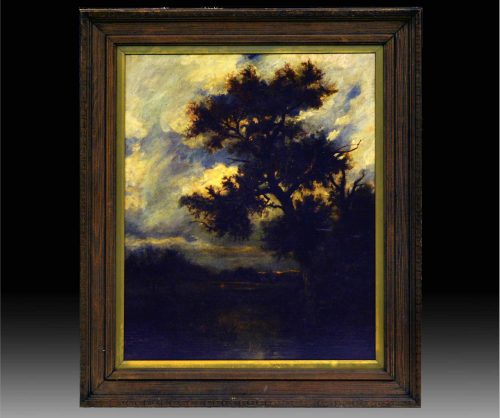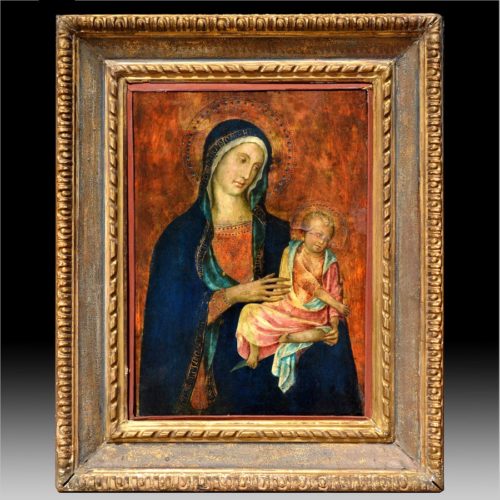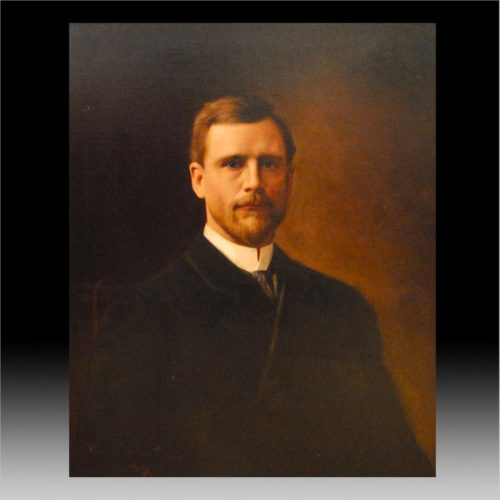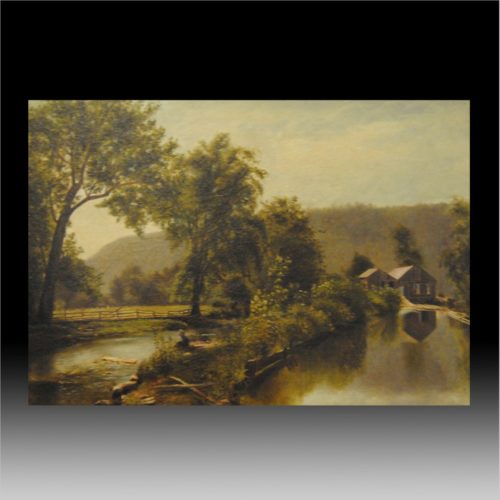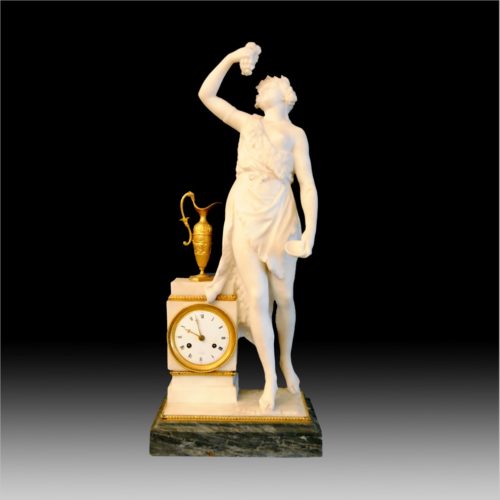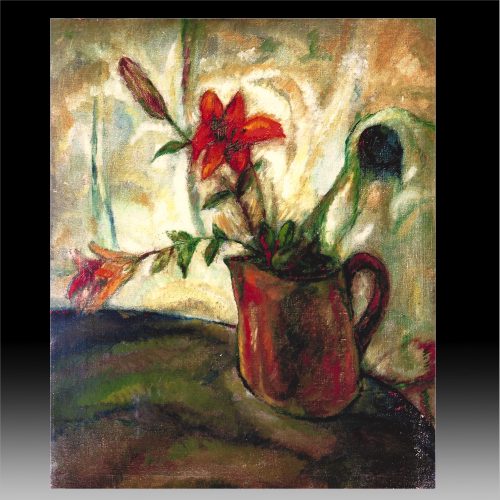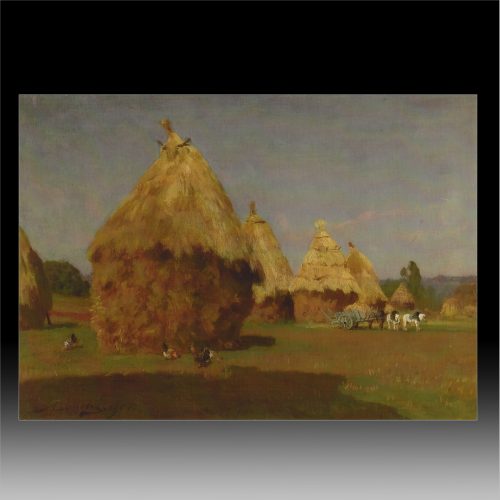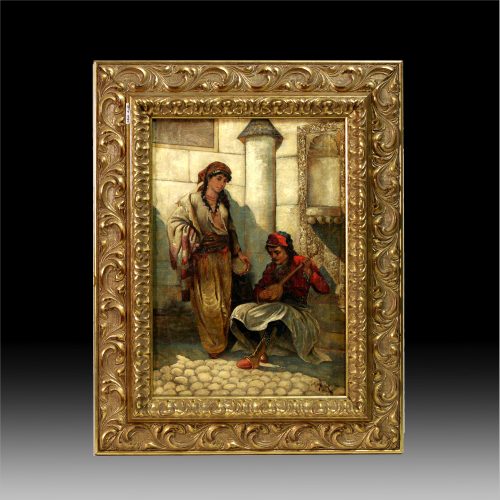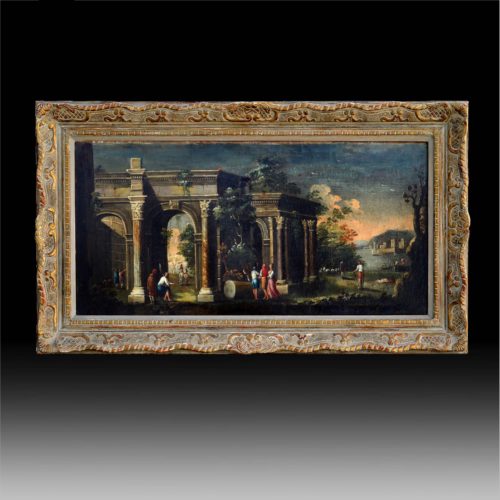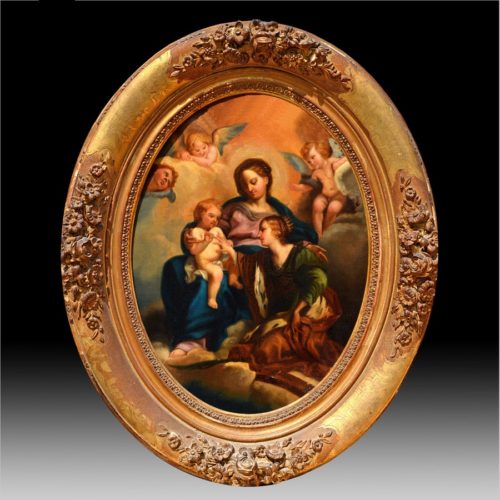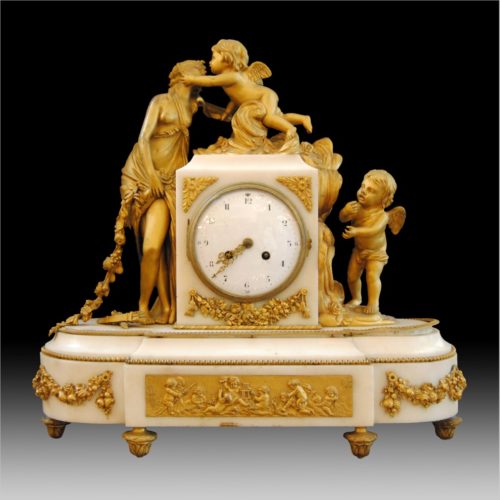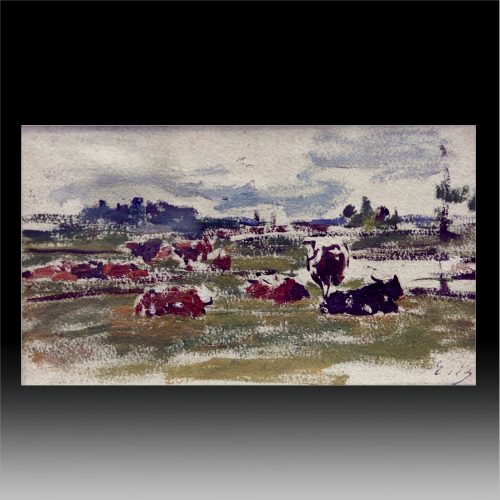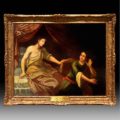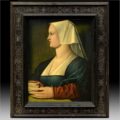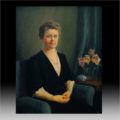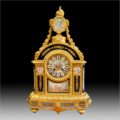-
Artist Unknown, 19th Century Landscape
-
Walter Gilman Page 1862-1934 “Portrait of a gentlemen” Oil on canvas 28 ½” x 36” Signed and dated 1903 lower left Worth 1500 @AC-NB
-
American School- Artist: Unknown “An Old canal” 20” x 14 ¼” In 1870 @AC-NB
-
A Napoleon III Ormolu- Mounted Carrara Marble Figural Mantel Clock, circa 1870. Modeled as scantily-clad baccante standing beside an ormolu ewer on a rectangular plinth, centered with an enameled dial inscribed […]/a Paris, the twin-train movement by JapyFreres, the movement door engraved to the reverse Repaired by/Blaine Jewelers/Newport R.I. / 9-29-54/11-1-61/9-13-77, on rectangular naturalistic base and bleu turquin marble plinth. Height: 25 inches CNYAPR2401-169 AC17000 F-798
-
Yasuo Kuniyoshi (American, 1893-1953) "Still life with flowers" Oil on canvas 20”x 16” Painted in 1920 COA by B. Usui
-
Arnulf De Bouche (German, b.1872) Haystacks Signed and dated ‘Abouche.1901’ lower left Oil on canvas 13x 18 in. (33 x 45.8 cm)
-
Aleksei Mikhailovich Korin (Russian,1865-1923) ‘Street Musicians’ oil on canvas 20½” x 14 ½”
-
Antonio Joli (Italian, 1700-1777) “Figures Amongst Classical Ruins” Oil on canvas 15 ¼ x 30 ½ inches (38.7 x 77.5 cm) Antonio Joli or Ioli (1700 – 29 April 1777) was an Italian painter of vedute and capricci. Born in Modena, he first was apprenticed to Rafaello Rinaldi. He then studied in Rome under Giovanni Paolo Panini, and in the studios of the Galli da Bibbiena family of scene-painters. He became a painter of stage sets in Modena and Perugia. In 1732 he moved to Venice, where he worked as stage-painter for opera productions at the Teatro di San Giovanni Grisostomo and the Teatro San Samuele of the Grimani family. In 1742 he went to Dresden, and then to London (1744–48) and Madrid (1750–54).
-
A Louis XVI Style Ormolu and White Marble Mantel Clock, circa 1880. The enameled dial with twin-train movement, within a square marble case surmounted by Cupid and flanked by Venus and a cherub, above a relief-inset marble plinth and toupee feet, on a marble base. Height: 19 inches Width: 19 ½ inches A pair of Louis XVI style ormolu and white marble figural six-light candelabra. Late 19th century. Each modeled as aputto supporting a floral-garlanded vase issuing acanthus-sheathed scrolled branches, on laurel-cast base, shaped plinth and tapering foliate-cast feet, now mounted as lamps. 26 ¾ in. (67.8cm) high, excluding fitting. CEMAR2701-100 AC15040 F-760 Candelabra: CEMAR2701-124 AC11280 F-763
-
Eugéne Boudin (French, 1824-1898) “Vaches au paturage” Oil on paper 4 ½” x 7 ¾” Stamped with initials lower right

